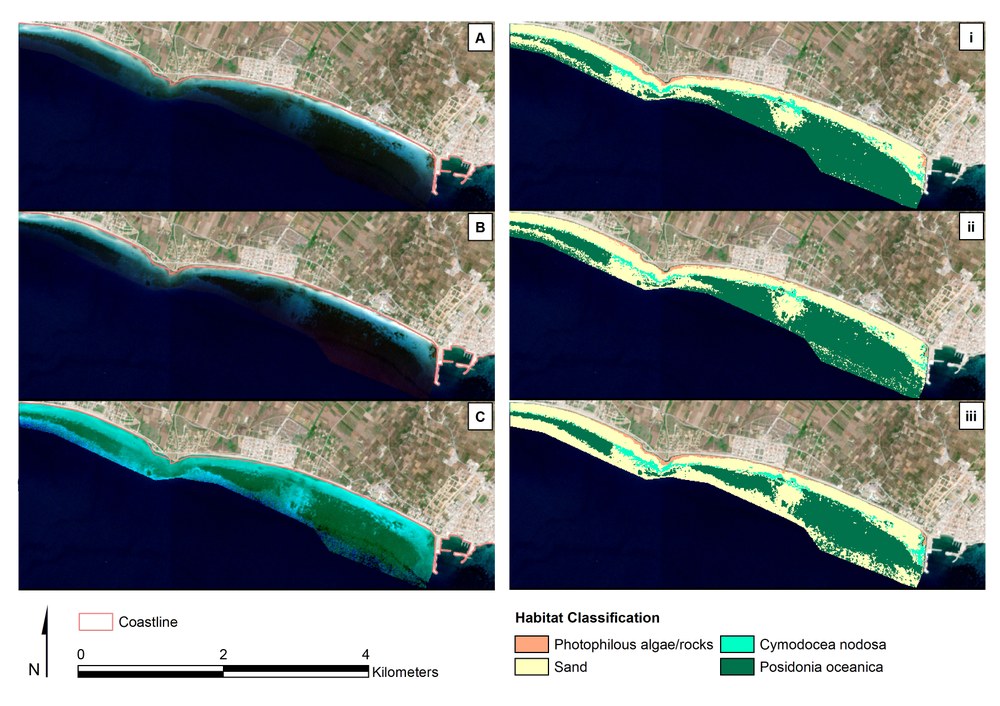Team: Optical Remote Sensing of Water
The "Optical Remote Sensing of Water" team in Berlin-Adlershof develops algorithms for the interpretation of optical remote sensing data from coastal and inland waters for monitoring and assessing water quality. Furthermore, it supervises the development of the new generic atmospheric correction processor PACO and is responsible for the validation and maintenance of the atmospheric correction processor Sen2Cor for Sentinel-2 as part of the ESA project Sentinel-2-L2A Expert Support Laboratory.
A current focus is the work on on-board calibration and sensor monitoring for the hyperspectral missions EnMAP and DESIS.
Two of the current topics and projects are presented here.
Seagrass Monitoring
Seagrasses are vital due to their numerous ecosystem services including carbon sequestration, coastal erosion and the nutrient cycle. Optical systems and methods now allow a temporally and spatially high-resolution, large-scale seagrass monitoring and thus better management and more effective protective measures. Seagrass monitoring techniques have been developed using the wealth of available data from Sentinel-2, PlanetScope, RapidEye and similar optical satellite sensors. The new methodological workflow combines atmospheric, water surface, solar glitter and water column corrections with satellite-supported bathymetry and machine-learning classifiers, whereby Mediterranean seaweed species were mapped both for individual data sets (Sentinel-2) and multitemporal (RapidEye, PlanetScope) data. The results of these quantitative studies in the Gulf of Thermaikos (Eastern Mediterranean) show that sea grass habitats were found to a depth of 16.5 m and that their area increased by 6.8% between 2011 and 2016.
Generic Atmospheric Correction Processor PACO
The heritage of EOC's development of atmospheric correction algorithms and software (ATCOR) for a variety of optical remote sensing sensors goes back to the 1990s. In 2013, the IMF decided to build a completely new generic atmospheric correction processor PACO (Python Atmospheric Correction). The goals were a strictly modular design based on Python, the implementation of a self-developed radiation transfer model and compliance with strict software engineering standards. The processor is able to work with data from many different remote sensing sensors that deliver images in the VNIR, SWIR to TIR spectral range. Work is currently underway on extending atmospheric correction to water surfaces, improving masking and providing independent quality levels for masks and ground reflections and correcting BRDF effects. PACO works as an operational processor without user interaction in CATENA. Beta versions are already used for processing Sentinel-2 and Landsat-8 data. Specially adapted PACO versions are implemented in the processors for the DESIS and EnMAP missions.

